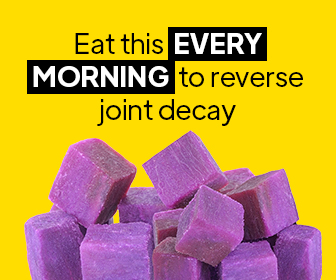When I bought my first fitness tracker, I only wanted something simple to count steps and track sleep. What I didn’t expect was that this little device would become my personal coach for joint health, especially for my knees and back. After years of sitting at a desk and struggling with occasional knee pain, I discovered that fitness trackers could do far more than just record numbers—they could actually help prevent injuries and keep me moving smarter.
If you’ve ever felt stiffness in your knees after a long walk, or back pain after hours at the office, you’re not alone. These are some of the most common complaints among adults today. The good news is that wearable technology, especially fitness trackers, offers insights and reminders that can keep your joints healthy and reduce the risk of chronic pain.
In this article, we’ll explore exactly how fitness trackers protect your knees and back, the science behind it, and practical tips for making the most of these devices.
Why the Knees and Back Need Extra Care
The knees and back are two of the most burdened parts of the body. Every step you take and every movement you make puts pressure on them. Over time, poor posture, overuse, or inactivity can lead to injuries.
- Knees: The knee is a complex joint that absorbs shock from walking, running, and lifting. Without proper muscle support and balanced movement, it’s prone to issues like arthritis, tendonitis, or ligament strain.
- Back: The spine supports the body’s weight and mobility. Hours of sitting, slouching, or lifting improperly strain the muscles and discs, leading to pain or injury.
Both areas suffer from the same hidden enemy: bad habits we don’t notice. That’s where fitness trackers shine—they reveal patterns, remind us to move, and guide us toward healthier routines.
How Fitness Trackers Protect Your Knees and Back
Fitness trackers combine motion sensors, heart rate monitors, and smart software to provide actionable feedback. Here’s how they specifically help with joint and spinal health:
1. Activity Reminders Reduce Sedentary Damage
Sitting too long tightens hip flexors and weakens the lower back. It also reduces blood flow to the knees. Fitness trackers buzz or vibrate when you’ve been inactive for too long, encouraging you to stand, stretch, or walk. These micro-breaks can prevent stiffness and long-term wear.
2. Step and Movement Tracking Encourage Consistency
Regular movement is key to joint health. By setting step goals—say 7,000 to 10,000 steps per day—you ensure that your knees stay lubricated and your back muscles remain engaged. Personally, I noticed that once I aimed for 8,000 steps a day, my lower back discomfort decreased significantly.
3. Posture and Form Feedback
Advanced trackers and paired apps can analyze your gait (how you walk or run). If your stride is uneven or your footstrike is imbalanced, it could overload one knee or strain your back. Some trackers even connect with posture sensors that alert you when you’re slouching.
4. Exercise Tracking Prevents Overuse
While exercise is great for strengthening joints, overtraining leads to injuries. Fitness trackers measure intensity, duration, and recovery time, helping you avoid pushing your knees and back too far. Data on heart rate zones, calories burned, and sleep quality supports smarter recovery.
5. Sleep Tracking for Joint Recovery
Sleep is when your body repairs itself. Poor sleep can worsen inflammation and delay muscle recovery that supports knees and the spine. By monitoring your sleep quality, fitness trackers remind you when to prioritize rest for stronger joints.
My Personal Journey With Knee and Back Care
I’ll admit—I didn’t take posture or movement seriously until pain forced me to. My knees began to ache after long runs, and my lower back would throb after sitting at my computer for hours. A friend suggested using a fitness tracker not just for workouts but for daily awareness.
At first, the constant reminders felt annoying. But soon, I noticed patterns: I sat for too long, skipped stretching, and often ran too hard without proper rest. By listening to the tracker’s feedback—standing every hour, pacing my runs, and sleeping better—I saw real change. Within months, my knee pain was less frequent, and my back felt stronger.
That experience taught me that wearables aren’t just fancy gadgets. They’re tools for building healthier habits that protect our most vulnerable joints.
Fitness Tracker Features to Look For
Not all trackers are created equal. If protecting your knees and back is your goal, look for these features:
- Step and movement reminders
- Posture tracking or integration with posture devices
- Heart rate monitoring for exercise intensity
- GPS tracking for runners and walkers (helps analyze stride and distance safely)
- Sleep monitoring for recovery
- Custom alerts so you can set reminders to stretch or do strengthening exercises
Tips to Maximize Knee and Back Protection With Fitness Trackers
- Set Realistic Step Goals: Start with 5,000–7,000 steps and increase gradually.
- Take Stretch Breaks: Use reminders to do quick back stretches or knee-friendly exercises like mini-squats.
- Check Your Gait: If your tracker supports it, analyze walking or running form to avoid strain.
- Balance Sitting and Standing: Use reminders to alternate between sitting and standing during long work hours.
- Track Progress Over Weeks: Don’t just look at daily data—monitor trends. Long-term patterns show whether your joints are improving.
- Pair With Strength Training: Strong muscles around the knees and back reduce stress on joints. Track workouts to ensure consistency.
Beyond the Device: Lifestyle Habits That Matter
Fitness trackers work best when combined with healthy habits:
- Strengthen core and leg muscles: Strong quads, glutes, and abs stabilize the knees and spine.
- Stay hydrated: Dehydration reduces joint lubrication.
- Eat joint-friendly foods: Omega-3 fatty acids, calcium, and vitamin D keep bones and joints resilient.
- Maintain a healthy weight: Every extra pound adds pressure to your knees and lower back.
Final Thoughts: Small Tech, Big Impact
Joint injuries can sideline your life, but they’re often preventable with awareness and consistent habits. Fitness trackers bridge the gap between what we think we’re doing and what we’re actually doing.
For me, the transformation wasn’t overnight. But with daily feedback, small reminders, and accountability, my fitness tracker became a partner in protecting my knees and back. I sit taller, move more often, and train smarter.
If you’re struggling with aches or simply want to future-proof your body, investing in a fitness tracker may be one of the smartest choices you’ll ever make.





